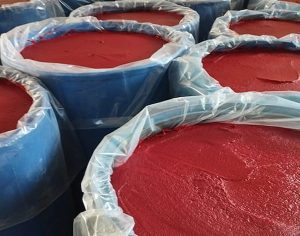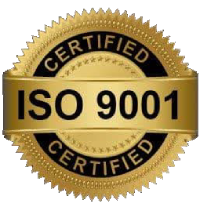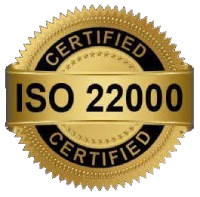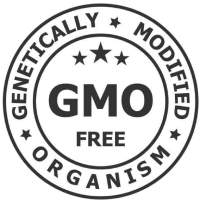Process of Producing Aseptic Tomato Paste
Tomato paste, the vibrant and flavorful condiment cherished in Iranian kitchens, now reaches our tables in a modern form with extended shelf life. Aseptic tomato paste is a novel product that preserves all the properties and taste of fresh tomatoes while offering long-lasting durability and ease of use. But how is this product produced, and what steps does it go through before reaching us?
In this article, join us on an engaging journey from tomato farms to advanced production lines of Aseptic tomato paste. Relying on the knowledge and experience of the reputable Geranaz brand, we will explore all the detailed and key aspects of the production process of Aseptic tomato paste. Ultimately, we aim to deepen our understanding of this valuable product.

Stages of Producing Aseptic Tomato Paste
As an innovative product in the food industry, Aseptic tomato paste has gained a special market position due to its numerous advantages. This product maintains the quality and flavor of tomatoes, offers high shelf life, and is easy to use. Below, we examine the production process of Aseptic tomato paste more precisely and highlight the critical points at each stage.
1. Selection and Preparation of Tomatoes
– Selecting ripe, healthy tomatoes from suitable varieties for Aseptic tomato paste production is the first essential step.
– Thorough washing of tomatoes with clean, hygienic water to remove surface contaminants and microorganisms.
– Removing waste and unsuitable parts such as stems and caps before proceeding to the next stage.
– Crushing and Preliminary Cooking
– Washed tomatoes are divided into smaller pieces using grinding machines to accelerate the production process of Aseptic tomato paste.
– Initial cooking of tomatoes at controlled temperatures helps deactivate harmful enzymes and preserves the natural color and flavor.
– During this stage, steam or direct heat can be used for cooking the tomatoes.
Read more: Benefits of Tomato Paste for Digestive System Health
3. Extraction and Filtration
– Tomato juice is extracted from the pulp using pressing devices or centrifuges.
– Filtration of the tomato juice is performed to remove suspended solid particles and impurities.
– Using various filters with different mesh sizes helps achieve a clear and uniform liquid.
Don’t miss reading the article on the effect of tomato paste on cancer
4. Concentration
– Concentrating the tomato juice in vacuum-operated equipment reduces volume and increases the Brix value of Aseptic paste.
– Precise control of temperature and pressure during this stage is crucial to maintaining quality and preventing burning or discoloration.
– The Brix of Aseptic paste, which indicates its concentration, should be within standard ranges.
5. Pasteurization
– Pasteurization of Aseptic paste aims to eliminate pathogenic microorganisms and extend product shelf life.
– This process is carried out at high temperatures for a short duration to preserve product quality.
– Continuous or batch pasteurization systems can be used, depending on production capacity and equipment.
6. Sterile Packaging
– Packaging in sterile conditions and using sterile packs prevents recontamination.
– Multi-layer sterile pouches, due to their high resistance to oxygen and light penetration, are suitable for packaging this product.
– Precise control of the packaging process and ensuring no leaks are essential to maintain quality and shelf life.
7. Quality Control and Storage
– Quality control tests, including Brix, pH, viscosity, and microbial counts, are performed to ensure compliance with standards.
– Storing Aseptic paste at appropriate temperatures, away from direct sunlight, helps preserve quality and prolong shelf life.
– Implementing traceability and inventory control systems optimizes product management and prevents spoilage.

The production process of Aseptic tomato paste, through strict hygiene practices and precise control at each stage, enables the manufacture of high-quality, long-lasting products. Due to its numerous benefits, this product can serve as a suitable alternative to traditional tomato paste and contribute to the development of the food industry.
Final Words
Aseptic tomato paste is a testament to progress and innovation in the food industry. A product that preserves all the properties and flavor of fresh tomatoes while offering durability and ease of use. It is the result of the merging of knowledge, experience, and technology applied in the production process.
Geranaz brand, committed to quality and innovation, has introduced Aseptic tomato paste as one of its flagship products. By utilizing the best raw materials and advanced technologies, it has secured a special place in the dietary habits of Iranian families.
Geranaz’s Aseptic tomato paste is not only a tasty and healthy seasoning but also a symbol of advancement and development in Iran’s food industry. A product that maintains authenticity and quality while meeting the growing needs of consumers.
Read more: Export Of Tomato Paste and Introduction of Geranaz Products
FAQs
Q1: What is the difference between Aseptic tomato paste and traditional tomato paste?
A1: Due to its unique production process (sterilization and sterile packaging), Aseptic tomato paste has a significantly longer shelf life compared to traditional tomato paste. Moreover, because it does not contain preservatives, it is healthier and more natural.
Q2: Is Geranaz’s Aseptic tomato paste made from organic tomatoes?
A2: Geranaz strives to use high-quality tomatoes grown according to sustainable agricultural standards. For detailed information about the source of the tomatoes used, please refer to Geranaz’s website or the product packaging.














